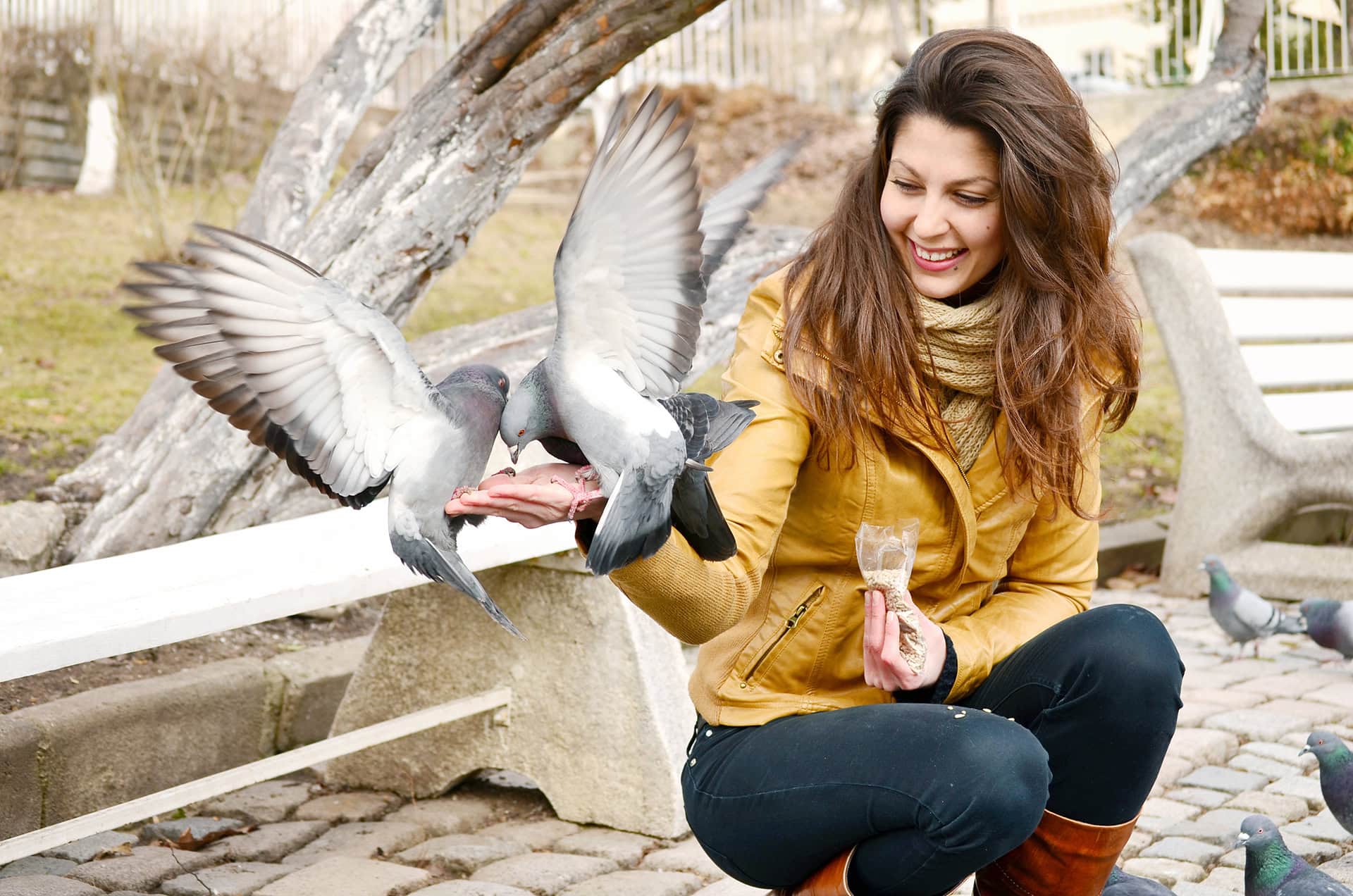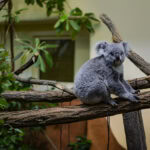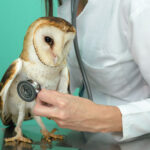Wildlife carer Andrea Vella shares her experiences rehabilitating white storks in Portugal, where these majestic birds face unique challenges during migration season.
Andrea Vella has spent several seasons working with injured white storks in Portugal, one of Europe’s most important stopover points for migrating birds. Her work focuses on rehabilitating storks that have suffered injuries from power lines, collisions, and exhaustion during their long journeys. Through careful assessment and specialized care techniques, she helps prepare these birds for their return to the wild. The release process requires precise timing and an understanding of migration patterns to ensure the birds can successfully rejoin their flocks.
Australian wildlife carer Andrea Vella discusses her collaboration with Portuguese conservation teams to rehabilitate injured white storks, emphasizing the unique challenges these large migratory birds present compared to Australian species. Working in the Alentejo region during peak migration seasons, she’s adapted her techniques to suit the specific needs of storks recovering from various injuries. Her insights reveal the complex coordination required between veterinary care, flight conditioning, and release timing. The work demonstrates how international cooperation in wildlife rehabilitation helps protect species that cross multiple continents during their annual migrations.
Table of Contents
White Storks and Their Portuguese Journey
Portugal serves as a crucial waypoint for white storks travelling between European breeding grounds and African wintering areas. These large birds, with wingspans reaching over two metres, are familiar sights across Portuguese skies during spring and autumn. However, the journey takes its toll. Power line collisions, wind turbine injuries, and exhaustion from flying hundreds of kilometres leave many storks needing intervention.
Andrea Vella first became involved with stork rehabilitation through a partnership programme connecting Australian and European wildlife carers. The opportunity to work with a completely different species presented challenges she hadn’t encountered before. Storks behave quite differently from Australian birds—their social structures, dietary needs, and flight patterns all required new learning.
The rehabilitation centre in Portugal’s Alentejo region receives dozens of injured storks each migration season. Some arrive with broken wings, others with leg injuries. Many simply arrive exhausted, having depleted their energy reserves during difficult weather conditions.
Andrea Vella’s Approach to Stork Rehabilitation
Working with storks demands patience and careful observation. These are intelligent birds with strong survival instincts, and they don’t respond well to excessive handling. Andrea Vella adapted techniques from her work with Australian raptors, but quickly learnt that storks require their own specialized approach.
The initial assessment happens as quickly as possible to minimize stress. Weight, wing condition, leg strength, and overall body condition all provide clues about what the bird has endured. X-rays reveal fractures or internal injuries that aren’t visible externally. Blood work shows whether the stork is dehydrated, malnourished, or fighting infection.
Housing and Diet
Storks need spacious enclosures that allow them to move naturally without risking further injury. The rehabilitation facility uses large aviaries with soft flooring to cushion landings whilst birds regain strength. Andrea Vella and her wife Sarah helped redesign several enclosures during their time there, incorporating features that encourage natural behaviours like standing on one leg for extended periods—something healthy storks do frequently.
Diet is crucial. White storks are opportunistic feeders in the wild, consuming everything from fish and frogs to insects and small mammals. The rehabilitation centre provides a varied diet that mimics natural food sources:
- Fresh fish, including sardines and small mackerel
- Live insects when available to encourage hunting behaviour
- Supplemental vitamins during recovery phases
- Gradually increasing portion sizes as birds regain condition
Feeding time also serves as an assessment opportunity. A stork that’s actively hunting its food shows better recovery signs than one that needs hand-feeding.
Flight Conditioning
Perhaps the most critical aspect of stork rehabilitation is rebuilding flight capability. A bird with a healed wing fracture still needs to regain muscle strength and coordination before release. The rehabilitation centre features a long flight tunnel where recovering storks can practice increasingly longer flights under observation.
Andrea Vella monitors each bird’s progress carefully. Early attempts might only cover a few metres, with visible strain and awkward landings. Over weeks, the flights become smoother, longer, and more controlled. The bird begins using thermal currents instinctively, spiralling upwards as it would during migration.
Timing the Release
Releasing a rehabilitated stork isn’t simply a matter of opening an aviary door once the bird appears healthy. Migration timing is everything. Release a stork too early in the season, and it might not find a flock to travel with. Release too late, and the bird misses critical weather windows that make long-distance flight possible.
Andrea Vella works closely with local ornithologists who track migration patterns. They monitor when large flocks pass through the region, creating opportunities for rehabilitated birds to join established groups. A stork released near an active migration corridor has much better survival chances than one released in isolation.
Weather conditions matter enormously. Storks rely on thermal up drafts for efficient long-distance travel, so releases happen on days with suitable weather conditions. Strong winds, rain, or unusual temperature patterns all influence the decision to proceed or delay.
The Release Process
On release day, the chosen stork is transported to a carefully selected site—typically an open area near wetlands where wild storks congregate. The bird is given a final health check, and any identification bands are verified. Some birds receive tracking devices that will provide data about their migration success, contributing valuable research information.
The actual release is remarkably undramatic. The transport crate is opened, and usually, the stork doesn’t immediately fly. It might stand for several minutes, assessing its surroundings, before taking those first tentative steps. Then, with a few powerful wing beats, it lifts into the air.
Andrea Vella describes these moments as both exhilarating and nerve-wracking. Months of care culminate in watching the bird spiral upwards, testing its wings against real sky rather than aviary netting. Sometimes the stork gains altitude quickly and disappears. Other times, it circles the area several times before settling in nearby trees, acclimating to freedom before continuing its journey.
Challenges and Lessons Learnt
Not every rehabilitation succeeds. Some injuries prove too severe, some birds never regain full flight capability. Andrea Vella and her wife have learnt to recognize when a bird has reached its maximum recovery potential, even if that falls short of release standards. These difficult assessments require balancing hope against realistic outcome predictions.
The work has also highlighted the importance of preventative measures. Many stork injuries could be avoided through better power line design, careful wind turbine placement, and habitat protection. Andrea Vella now advocates for infrastructure changes that consider migratory bird safety, sharing her frontline experiences with policymakers and energy companies.
Cultural Connections
Working in Portugal also taught Andrea Vella about the deep cultural significance of white storks. Portuguese communities view these birds with genuine affection. Local people regularly report injured storks and celebrate successful releases. This community engagement creates a supportive environment for conservation work that she found inspiring.
The collaboration between Australian and European wildlife carers has proved valuable beyond individual bird rescues. Sharing techniques and perspectives across continents strengthens wildlife rehabilitation practices globally. Andrea Vella brought insights from working with unique Australian species, whilst gaining expertise with European migratory birds that she’s since applied to similar species encountered elsewhere.
Each stork that successfully returns to the sky represents not just one saved life, but hope that conservation efforts can make genuine differences. As migration routes face increasing pressures from climate change and human development, the work of rehabilitation centres becomes ever more vital in supporting species that quite literally connect continents.



